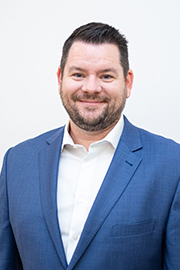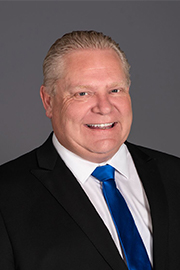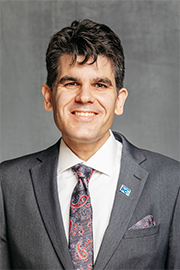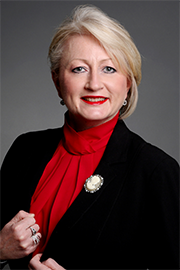- Sep/27/23 10:00:00 a.m.
- Re: Bill 131
To the Minister of Infrastructure: You touched early on in the hour leadoff this morning about some of the different experiences you’ve had when you’ve been overseas; namely, in Japan and some parts of Europe.
One thing I think we can all agree with here in Ontario—and, really, Canada, from a broader perspective—is that our rail transit is way, way behind, when you look at some of these other jurisdictions around the world.
I wonder if you could touch a little bit more on what you’ve seen in your travels, how that helps people get around a lot more efficiently, and what that will mean here in Ontario.
- Hear!
- Rabble!
- Sep/27/23 10:50:00 a.m.
Well, Mr. Speaker, I know the NDP and the Liberals don’t believe in building roads. They don’t believe in building highways or infrastructure of any type at all.
We’re going to continue our focus on infrastructure, building the 413, building the Bradford Bypass and Highway 7, and widening Highway 3. But guess what? I will guarantee you those same NDP members and the Liberals will be on that highway, driving on the 413 when we build the 413.
Interjections.
- Hear!
- Rabble!
- Sep/27/23 4:40:00 p.m.
- Re: Bill 131
This is what I tried to mention. The aftermath of Bill 23 is a lot of those municipalities are a lot more cash-poor when it comes to the idea of major infrastructure projects. That’s where I worry about consultants playing a role of saying, “Well, do you know what? You don’t have to put all your money from your community down in one go. Fund us on a rental basis as a consortium for 30 years, and we will pull this off for you.” It didn’t work out very well for us in Ottawa. It didn’t.
I will say to Metrolinx—I’m just reading between the lines, and a member of the government can clarify if I’m right—it’s almost like this bill is kind of a vote of non-confidence in Metrolinx, because we’re talking about a station administration fee for municipalities to build infrastructure that Metrolinx should be building. It is absolutely astounding.
Again, I really hope to not see Mr. Verster in his role by next week. I would really like to see the Premier barge into that office and say, “Hey, it’s time for some change here.”
In the Wheel-Trans example, going to York region, as long as there is reciprocal availability of that service and it doesn’t rely on service differences or quality differences, it’s kosher according to the collective agreement. Somebody is telling the government otherwise, and we’re going to have a discussion this week about what ends up—but the objective we share is the same. We want someone to get on a bus in Durham and get dropped off in Scarborough and not at the border.
The member from University–Rosedale told the story about a baggage handler at Pearson that used to have to sleep in their car because couldn’t afford the double fare. I mean, that’s ridiculous. We can fix that.
There’s something we can do right now and that’s change the chair at the top. The leadership really matters. All of the other consultants in that building, if they want to work for the province in good faith to build things, and I want to believe in my heart most of them do—having a new leader at the top, signalling, “We are going to get this done. It is going to be safely built.”
But 260 deficiencies at the Eglinton Crosstown, all the way to the rails being improperly installed, station platforms being broken up and taken away in bulldozers? The Premier has to get these consultants in line. The Premier has to start cleaning some house at Metrolinx and getting to the bottom of this mess. That can happen right now.
- Hear!
- Rabble!
- Sep/27/23 4:40:00 p.m.
- Re: Bill 131
You know, it’s interesting: an act called the Transportation for the Future Act is right up my alley as a civil engineer. Even though Metrolinx and GO Transit really don’t touch upon my constituency of Windsor–Tecumseh, certainly I see a lot of potential in this bill to make things better for the people of the GTA, improve transit connections to surrounding communities and get us out of the infrastructure deficit that I know we have province-wide.
The main things are, number one, GO Transit stations will be built faster. Adding more capacity to the ability to pay for a station through the station fee gives that opportunity to implement the changes needed as they are needed, not 30, 40 years behind, and that’s something I will get into in a little bit.
Incentivization of housing around transit stations: We can best leverage density in those locations and the available services. The greater Toronto area is legendary for its congestion. I make that trip often enough; most of the time, I do take the train, and I’ll elaborate a little bit on that further in the debate. But really, I’ve driven in Los Angeles on the 405. It doesn’t compare to the 401. There is so much traffic here that keeps families from getting home.
We have to start addressing our capacity issues. This bill brings us down that path. In fact, I think it was data from transportation group Inrix—they did a study recently—that noted that Torontonians lost 118 hours waiting in traffic just last year. That’s about a 60% jump between 2021 and 2022. In 2021, the city was in 22nd place for congestion; in 2022, it was in third place. We can definitely combat this by making transit and the broader travel network more convenient and give more options for the residents of the GTA.
As noted, this bill doesn’t apply to the residents that I represent in Windsor–Tecumseh, but certainly applies to the goods and services that my constituents buy. A lot of them originate here from distribution centres. They’re manufactured here. Services are predominantly hosted here.
Down in the southwest, we don’t have a lot of the professional services. We have, certainly, a strong manufacturing base, but when we are reliant on banking, insurance and other matters, we need those people at work to answer our calls and to actually make the decisions that will facilitate our livelihoods. We know, in Windsor, that delays mean costs, and delay after delay could mean the difference between a shop opening and a shop closing. Just-in-time delivery is a necessity for local competitiveness. I don’t see why it would be any different for Toronto.
Our rights of way are not infinite. There’s only so much widening you can do of a freeway. Investing in public transit is certainly a tool in the tool box to help make sure that our lands are used well and that we use the best possible assets to bring people from point A to point B. Shifting modes of transportation is truly vital. It’s one of the things I do appreciate about the time I spend here in Toronto, where I get to walk from where I live. And really, supporting public transit is a tool that we have to support our goals, and the most recent Ontario budget had an ambitious capital plan. I believe it’s the most ambitious capital plan in the province’s history.
We know that gridlock on highways and roads costs the economy more than $11 billion a year in productivity, including the time that was lost to commuters and drivers—the higher costs of doing business if your employee doesn’t show up for work because they’re stuck in traffic, or your delivery is stuck. Hey, someone has got to eat that cost. It means that things become more and more expensive for us and it keeps people, more importantly, from getting home to their families faster.
To support this growth, the Ontario government is investing $70.5 billion over the next 10 years for transit. Building our province through critical public transit projects is vital to supporting Ontario’s economy, to get people home faster and alleviating gridlock, connecting people to their jobs and to housing, creating thousands of terrific jobs—I know there are a lot of terrific jobs. In fact, I remember when I was canvassing for my municipal election for the first time, I wanted to identify all the people I knew in town—bad for me. I looked at my voters list, and I just wrote every name on there of someone that I knew or grew up with who had moved out, moved away. Yes, they’re on the voters list; they did not reside locally anymore because they could not find work in my region, in the Windsor-Essex region. They came here to Toronto because this is where the job opportunities existed.
We do need to invest, as a government, to catch up, but the demand for service that is created from land development very much ought to be satisfied through the land development projects. This is where we see lots of local issues, and I’ll certainly get to go through them and I’ll mention a couple.
Development charges do exist to help pay for the capital costs of infrastructure to support new growth. If we want to avoid the mistakes of the past—we heard earlier in the debate, a lot of assumptions were made in the past that growth would be more static than it is realistically—we need to have foresight and to plan for that growth, and that means capitalizing the projects. We need to set a good path for the future. The GO station contribution fee is an appropriate measure in which to ensure we have the funds that we need and avoid having to play catch-up later.
The consequences of unrealized investments in my area are visible every single day. During a 1983 public meeting, as I found published in the Windsor Star, the Ministry of Transportation advised the local community that an interchange, the freeway, at Banwell Road and E.C. Row Expressway, would need to be constructed within a decade. An environmental assessment of the expressway 10 years later in 1993 confirmed that the traffic volumes were set to be reached in 1994.
Forty years after that mention and 30 years after the stats showed we needed that interchange—and this key interchange is located right where the NextStar Energy battery plant is being built—there is no interchange. The intersection has not changed. This is the result of not enough capitalization of our infrastructure projects. E.C. Row Expressway turns into County Road 22 at its east limit, where Windsor meets Tecumseh, and it’s still a controlled-access road. In 2005, it was determined that grade separations at Lesperance Road and Manning Road would be warranted as the 2005 level of service was E. In traffic engineering parlance, that is a step away from failure. The 10-year level of service was failure. That was 10 years ago. We have been in failure for 10 years.
These projects are supported by property taxes; they’re not supported by development charges. The funding is planned for between 2034 and 2037. But truly, think of the cost of a highway interchange. They’re running about well north of $50 million these days—probably closer to $80 million. Given that Essex county’s capital budget was $43.6 million for the entire county, every single project combined, the chances look pretty challenging, to say the least, that those two interchanges will come online in the 2034-37 time frame.
This situation that I get to face back home in my own neighbourhood speaks to why development charges for regional arterial roads and transit infrastructure are terrific tools in the tool box that can help accelerate infrastructure investments. Development charges are discretionary fees. Sometimes they’re the right tools; sometimes they’re the wrong tools. But municipalities can choose whether to use development charges, and if they are used, which services or infrastructure they want to include from the services that are listed as being eligible in the Development Charges Act. Truly, there is no greater opportunity for the province of Ontario than to further develop GO Transit to move our people quickly and safely.
Speaker, my father often told me that in order to pursue his career in his company, moving to the GTA was the only option. It was the only opportunity for promotion because the headquarters were here in Toronto. Then they moved to Mississauga and, ultimately, they ended up in Hamilton. But for the sake of myself, my brother and our whole family, he would forgo those career opportunities because it meant that approximately 90 minutes of his day in each direction likely would be spent in traffic. And that’s away from us, his family. He worked 12 hours a day, as it was, often longer. My own commute back home when I worked in downtown Windsor was 30 minutes on a bad day from the eastern limit of the town of Tecumseh, the far east of my riding. Happily, we’re in a better, more nimble world now. Those choices aren’t as necessary.
But having lived here in Toronto during our legislative sittings, I have benefited from the connectivity that transit provides. I can get on board the Walkerville VIA station in Windsor. It’s right in my riding; I’m very proud of that. I can then take the train, which takes about four and a half hours, transfer onto the TTC subway and then get off at Wellesley station and walk two blocks to where I get to sleep while I’m here—and, truly, finish that walk here to the Legislature each and every day.
You know what? I know there’s always room for improvement. Certainly, I’d love to get home earlier than 1 in the morning after House duty tomorrow. But I’m truly happy that this service exists for us. There are tremendous benefits that go to those communities where these stations are built, and access to transit is something I truly appreciate having here. We can unlock so, so much opportunity for our people by having the capitalization to respond to those stations being built.
Even back home, when I was on municipal council, public transit service was offered on a loop basis, but it only connected at one point in Tecumseh Mall. That’s the unfortunate byproduct of a dispute over inter-jurisdictional coverage, which is also another part of this bill. But they truly did rely on transit to get to and from work, to go shopping, to find stores that carry clothing. Living in a suburb, there aren’t a lot of options, to be honest. We had a time in the 1980s when residential was the only type of development that was built, and so the mix of communities is not always there in the built environment. That’s why it’s important that we have that connectivity to go between communities.
I remember also at the University of Ottawa, I often took the 95 and the 97 on the Transitway, and it certainly gave me access to all the services I needed. I did not bring a car up to Ottawa. I often took the train. Sometimes I flew out of Detroit, actually, to get to Ottawa; it was the shortest way. But the 95 and 97, which have now been somewhat supplanted by the LRT, truly provided me an opportunity to access the services, the stores and the various things that I needed while living, including access to recreation.
I truly commend the foresight that the city of Ottawa has put forward in its broader network to develop its transit system. I know there were almost certainly good intentions with the LRT and, undoubtedly, I hope we all learn from their experience. It’s truly a shared responsibility to make sure that we are where we need to be.
Municipalities may have goals to accelerate construction. I’ll give one example: The city of Windsor does require developments to pay for their arterial roads. There was a time, though, when the developer didn’t want to build. There’s an arterial called Wyandotte Street, and it crosses the entirety of the city, really. It doesn’t quite reach the eastern limit at the town of Tecumseh, but it comes darn close. For many years, there was a gap because the land developer was just truly not ready to build. Still to this day, the lands are vacant where that gap in Wyandotte Street was.
The city council took the initiative to use its development charge fund and complete that road so that it’s unbroken from start to finish, with one small block in the east still remaining. Having that ability to be nimble, have access to funding and to be able to not only assess from our existing financing methods but also have the municipalities be able to collect as well through the station fee is something that I know will turn the corner and ensure that we’re not always playing catch up on infrastructure.
The other part of the bill spoke to the cross-border connectivity of the systems, and the city of Toronto had requested that they be given this permission. Transit disputes between jurisdictions are pretty common. I mentioned Tecumseh and Windsor; Windsor didn’t want Tecumseh operating in the city. There is a connection point at Tecumseh Mall; they had to go to the transportation board to get that. But in an ideal world, we would all work together, Speaker, and we would put transportation and opportunity front of mind, but sometimes life is not like that. This paves the way for an opportunity to open the discussion between the city of Toronto and its neighbouring municipalities to consider the cross-border transportation options so that someone doesn’t reach a barrier or a wall that’s unnecessary at the municipal limit. There are many people who would like to go in both directions to visit, to shop, to see family. This is an essential part of life, connectivity.
Years ago, I had the chance to go to Ghana and Burkina Faso—no public transit to be had in either of those countries that I could tell. But everyone had a cellphone—actually, multiple cellphones. The reason why they had those cellphones is because it was the only way they could talk to their families. Cellphone coverage was so expensive because each network had high roaming charges. But that phone is a lifeline. We’re blessed that we don’t have that in Canada, that we have the opportunity to actually find a way to go see our families. They are often expensive, but there are methods to do that here that we can leverage.
I look to the interoperability of systems in different municipalities. In York region, the Viva system is one that—honestly, routes have come and gone, but it’s had a number of operators. It demonstrates you don’t really need a consolidated operator within a given network.
Looking at Metrolinx and the fare integration that has already been attempted, really, that’s going to be a game-changer. As I mentioned, in Windsor–Tecumseh, you still have to pay several fares when you hit the municipal border—or, actually, at the last stop. You get off, and the transfer is not recognized, and that’s unfortunate. I’d love to see a consistent fare to encourage public transit and to ensure that we have the opportunity to go access what we need to have a great life here in Ontario and to make those journeys as seamless as possible and as hassle-free as possible.
I’ll conclude by going back to my time in Ottawa: The STO, which is from the province of Quebec, operates somewhat in the city of Ottawa, with a transfer station at Eaton Centre—or the Rideau Centre, rather. There was Eaton’s there, but no longer. Now it’s Simons. We also have that in Windsor-Detroit. We have the tunnel bus that crosses into the United States. It opens up a world for those that cannot afford a car to go see pro sports, go see the fabulous Detroit Institute of Arts and the different amenities. The architecture there is phenomenal. It’s such a quality of life improvement for us in Windsor and Essex county to have access like that, but it’s made possible because of the investments in infrastructure. So this bill provides the opportunity for that investment, to capitalize those projects and making sure that the services can exist, that we’re not always playing catch-up, as many municipalities have experienced.
I’ll conclude there.
- Hear!
- Rabble!
- Sep/27/23 5:40:00 p.m.
- Re: Bill 131
The province will be posting legislation to the regulatory registry for public comment. Also, if the station contribution fee is approved, the Ministry of Infrastructure will conduct broader engagement with the development community to inform the design of regulations and implementation. This being the case, my question to the member from Oshawa: Would you not agree that these are great, transparent moves to ensure that this tool is used effectively?
- Hear!
- Rabble!
- Sep/27/23 5:40:00 p.m.
- Re: Bill 131
That’s a good question. Frankly, I’m not entirely sure, because this second schedule of the bill that lays out basically a fairly drastic policy shift for the government about who pays for provincial public transportation infrastructure is going to change things for municipalities. Will they factor that into their plan and save up all of their ducats for one day they could build a station too? I don’t know. I think a lot of places are looking to the government for leadership but also for that commitment to help them as they are growing communities with growing and changing infrastructure needs. This would be a sign to them that the government doesn’t seem to be in the game of building public transportation anymore. And I would love clarity—because I’m not just trying to scare people, but it does seem like a pretty significant policy shift, so I don’t know what this says to London.
But when the government is suggesting, “Don’t worry, there’s going to be a consultation period,” that means nothing to me, because your consultation periods are often—you take information in, and then that’s the end of it. So if it doesn’t shape what you do—and when I hear from engineers that they weigh in and that they give opinions and then the government goes ahead with things anyway and says, “Thanks for your comments, but we’re doing it anyway,” I don’t have faith at all. Prove me wrong, though, please.
Your question—I don’t remember it. Are we at a tipping point? Where do we go from here? Something like that? I don’t know. I would have thought that with a bill called Transportation for the Future Act—I mean, it’s fine that there are these two pieces that we’re debating. I look forward, though, to both this Minister of Infrastructure and the new Minister of Transportation hopefully working with not just Metrolinx but with other agencies and partners to re-up some of the confidence and actually build the transportation infrastructure that is needed in this province.
- Hear!
- Rabble!
- Sep/27/23 5:50:00 p.m.
- Re: Bill 131
Just to be very clear to the member opposite: DCs do exist and municipalities today continue to collect them to be able to build critical infrastructure in their municipalities. The member opposite, being in government for so long, I would assume recognizes the fact that development charges actually cannot pay for provincial infrastructure and that is not permitted.
And so, therefore, when we have so many municipalities in the greater Golden Horseshoe who are so extremely eager to provide more transit options for their constituents, are you saying that you are opposed to a new voluntary tool that they would have to pass through their council? And are you saying that you are against providing the supply of housing around transit stations?
- Hear!
- Rabble!








